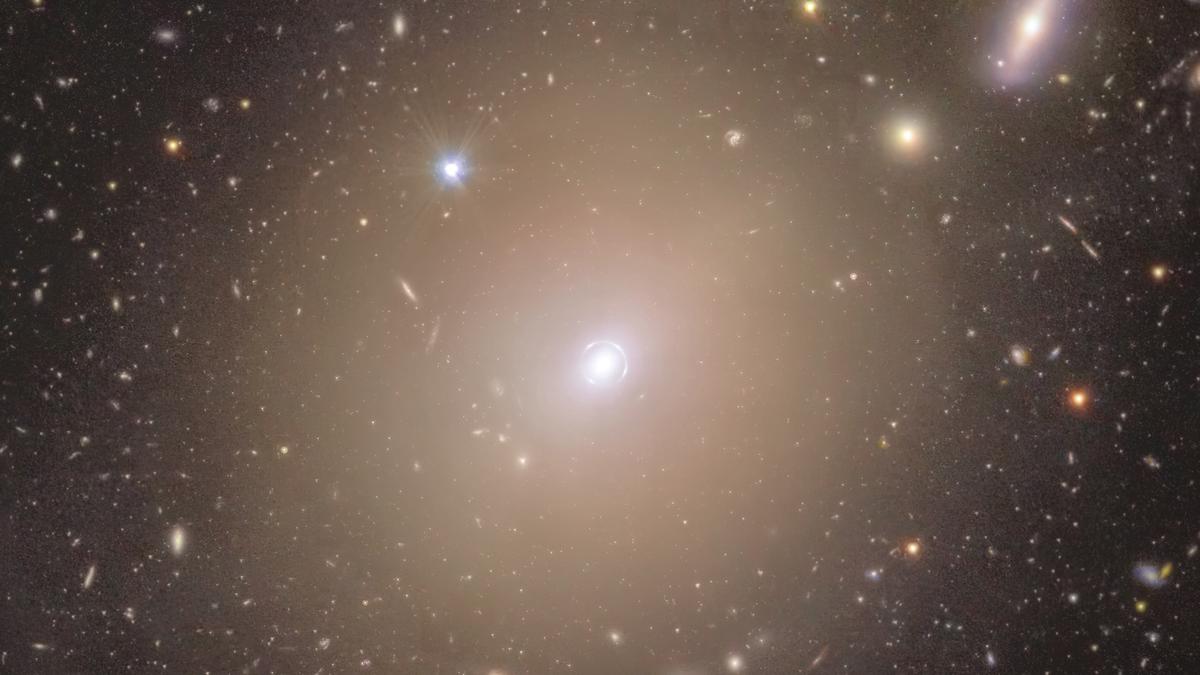
Euclid space telescope discovers new ‘Einstein ring’ in nearby galaxy
The Hindu
The Euclid space mission of the European Space Agency has spotted an Einstein ring in the galaxy NGC 6505, just 590 million lightyears from the earth.
More than a century ago, Albert Einstein predicted that massive objects like large galaxies and clusters of galaxies act like giant lenses in space by bending light from distant objects.
As seen from an observer on the earth, a rare alignment of a background object with such a lens in the foreground can lead to a visual spectacle. Because of the lensing, the observer sees arc-like structures skirt the foreground lens. Sometimes these arcs are arranged in a circular pattern, which is called an Einstein ring.
Recently, the Euclid space mission of the European Space Agency (ESA) spotted an Einstein ring in the galaxy NGC 6505, just 590 million lightyears from the earth. This may sound like a long distance, but on the astronomical scale the galaxy is veritably in our cosmic backyard.
An astronomer named Bruno Altieri first noticed this Einstein ring in September 2023 in a blurry image captured by Euclid, which ESA had launched only two months earlier.
The image was unfocused by design because in the initial days of the mission, scientists were taking data to test if all of Euclid’s systems were functioning properly. Subsequent images of the galaxy yielded focused images, using which scientists confirmed the presence of the ring. It has since been nicknamed Altieri’s ring in honour of the scientist who stumbled upon it.
Einstein predicted that light will not travel on a straight path when moving in the vicinity of massive objects. He argued that a large object distorts spacetime — the fabric of space and time around it — just like the curvature of a hammock is determined by the mass of the person sitting in it.
This idea forms the basis of Einstein’s famous general theory of relativity, which the American physicist John Wheeler summed up perfectly in the following words: “Matter tells spacetime how to curve, and curved spacetime tells matter how to move”.













